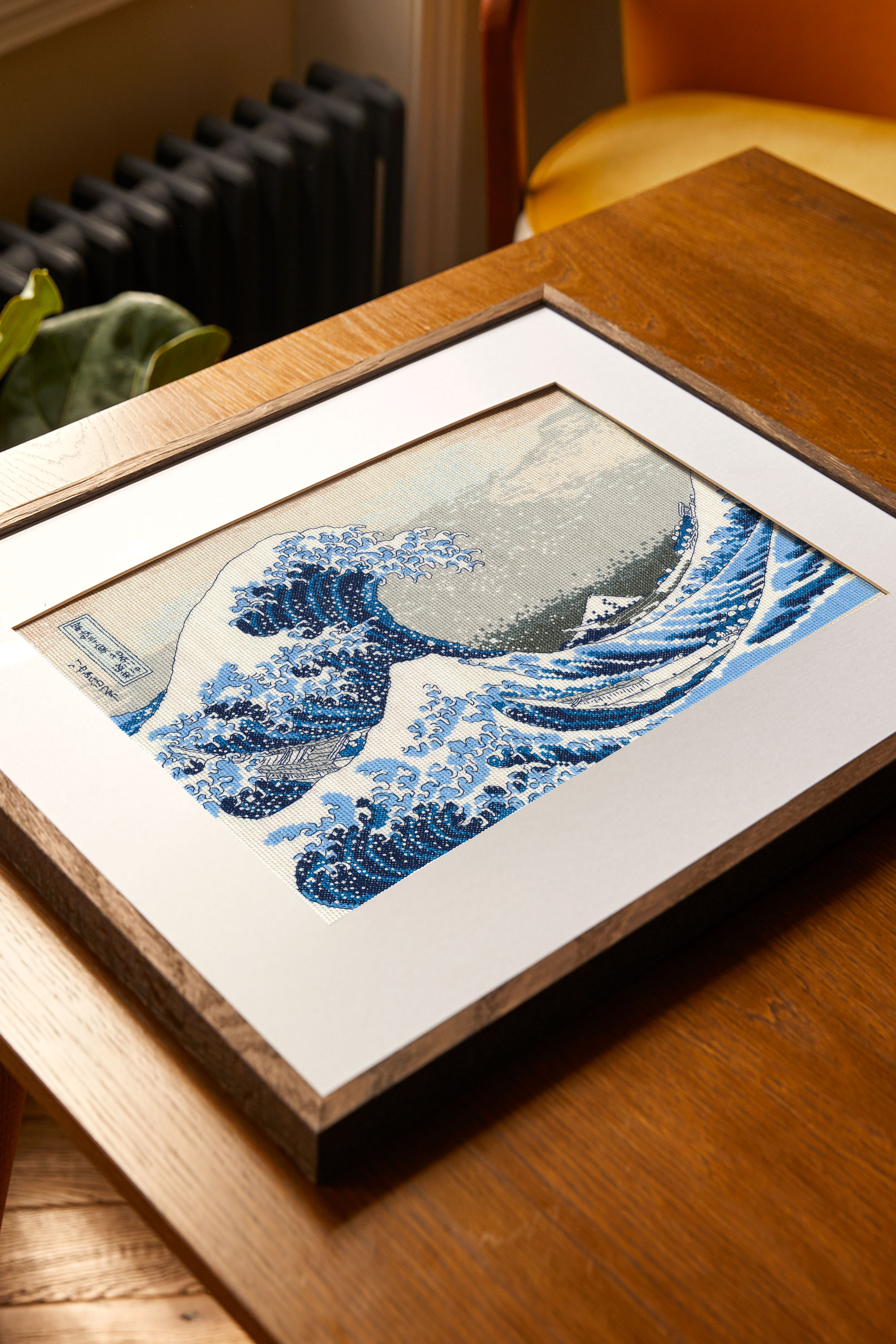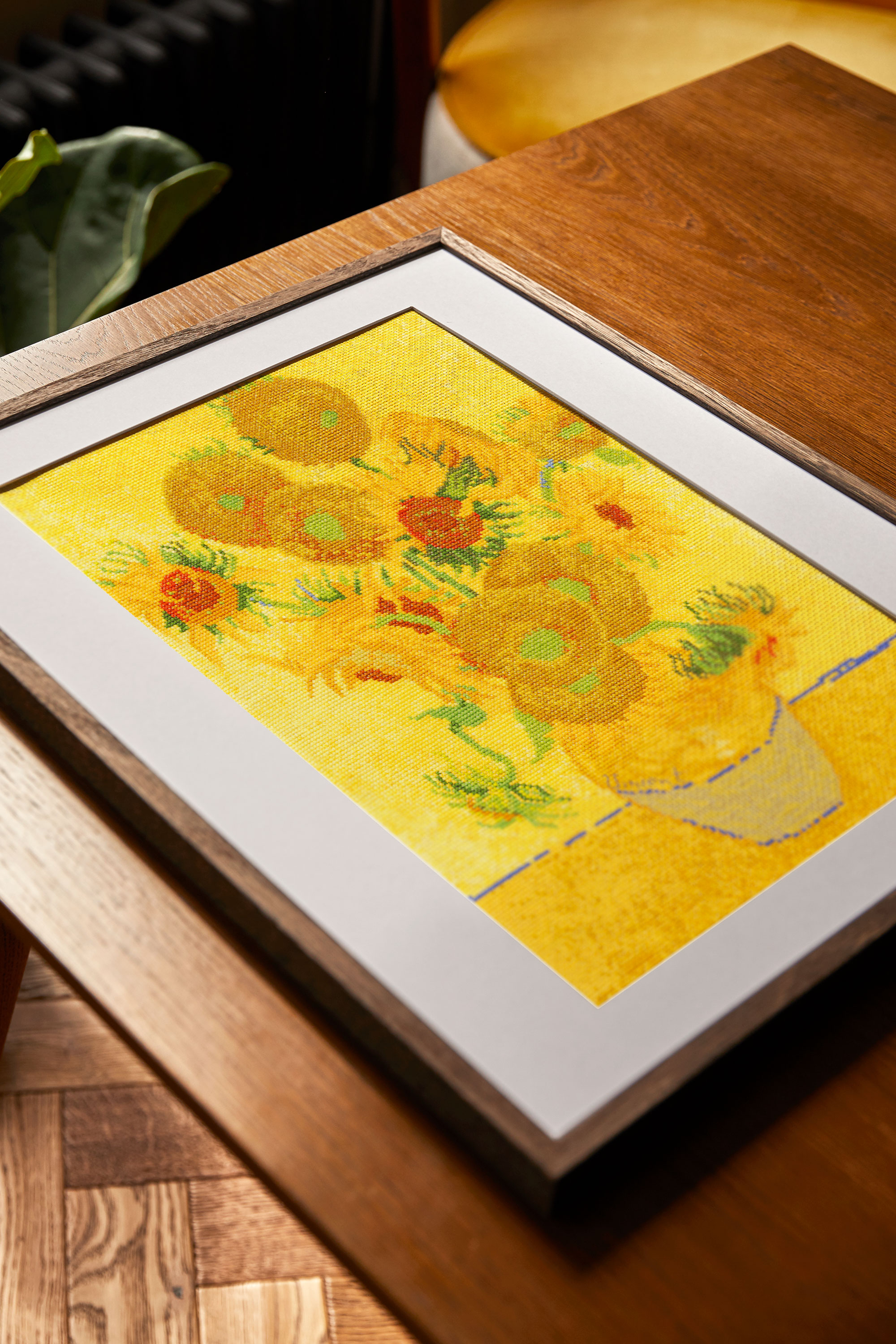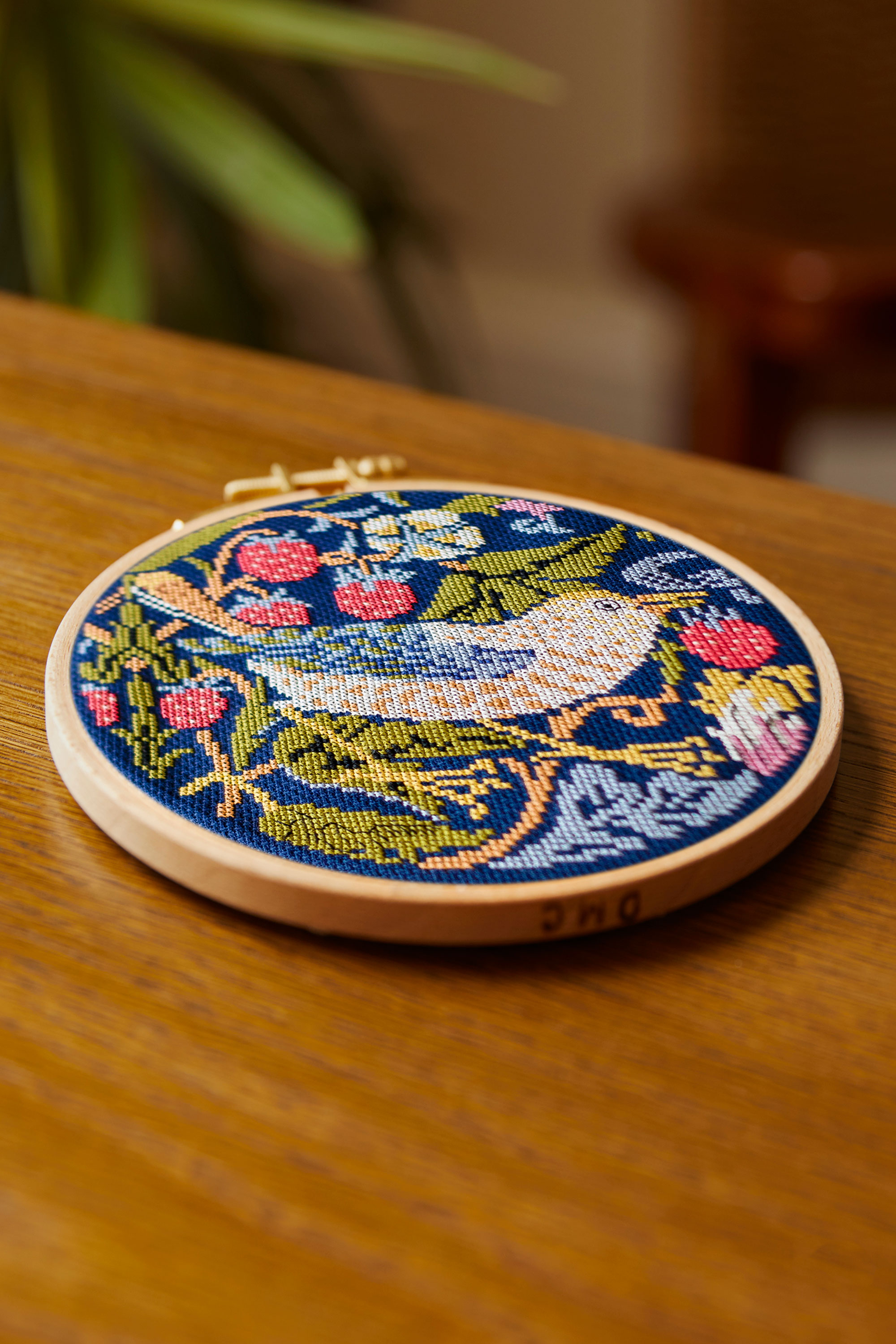DMC has collaborated with several leading museums to create high-quality kits based on famous works. Our unrivalled palette of over 500 shades of stranded embroidery thread makes us the ideal partner to reinterpret art in stitch whilst respecting the beloved original works. We talked to the team involved with our most recent collaboration with the prestigious French Museum, Le Louvre to find out more about how these special kits were created.
When did you start to collaborate and what was the process?
In the Spring of 2021, we contacted Le Louvre to discuss a collaboration. We started by choosing paintings from their extensive collection that we felt would work well as needlework. After that, we considered which technique would be best for each, cross stitch, traditional embroidery or tapestry. Then the longer technical process of reinterpreting the works into needlecraft patterns began. In total, the process took about 18 months.


Why did you choose these pictures from many masterpieces in Le Louvre's collection?
The Mona Lisa is of course the most emblematic work of Le Louvre Museum; it was the indispensable piece in our collection. Then the choice fell on Johannes Vermeer, painter of the Dutch Golden Age - a movement as important as the Italian Renaissance. Finally, we picked La Redouté, a 19th-century painter, famous for his love of flowers. His painting of peonies really inspired us.
What was the most difficult part of interpreting these world-famous paintings?
The most challenging part was to transcribe the paintings as faithfully as possible from the point of view of color and general appearance while adapting them to the different stitch techniques. It was important to everyone involved from DMC and Le Louvre that we respected the original works.

How do you create the cross stitch designs from the paintings?
At DMC we have a dedicated cross stitch software that automates the first part of the process of translating the images into cross stitch charts. But this is only a starting point, our team spent many hours adjusting the colours and using their technical skills to make the work as easy as possible to stitch while maintaining the aesthetic of the original painting. It is quite a challenge to recreate the Mona Lisa’s famous enigmatic smile!
How did you express Vermeer’s unique gentle tone of light?
The expansive palette of 500 shades of DMC Mouliné Spécial was key to interpreting Vermeer's painting with maximum nuance, light and delicacy. Without such a wide choice of shades, it would not have been possible. For The Lacemaker, 26 different colours were used. Of course, the original artwork contains many more shades but the whole art of embroidery design and especially of cross stitch is to reduce the number of colors, so it is easier to stitch, while maintaining the integrity of the image.


Some kits are faithful to the original paintings, but others are more stylised. What was the inspiration for these interpretations?
We wanted to make it possible for anyone to stitch a masterpiece, including beginners and younger stitchers. To appeal to these audiences we decided to include some more playful and simpler modern interpretations. The bouquet of peonies, the sunflowers and the parrot are all elements taken from other paintings in Le Louvre's collection. By adding them to the composition, it adds a "quirky" and playful spirit to the interpretation of the Mona Lisa. For beginners, we focused on details within the artworks such as the Mona Lisa’s hands, the bather seen from the back of Ingres' "Turkish Bath" or Baugin's "Plate of Wafers". By stripping back to key points of interest we could create easier needlework projects that can be completed more quickly and easily, even by relative beginners.
What does the Louvre Museum mean to French people?
The Louvre is the most famous museum in France! It is an integral part of our history and heritage. Everyone wants to visit at least once in their lifetime, even if you are not an art lover, many go simply for the joy of discovering its incredible architecture and the wonders it contains. We hope these kits will give everyone who makes them a sense of that joy.



